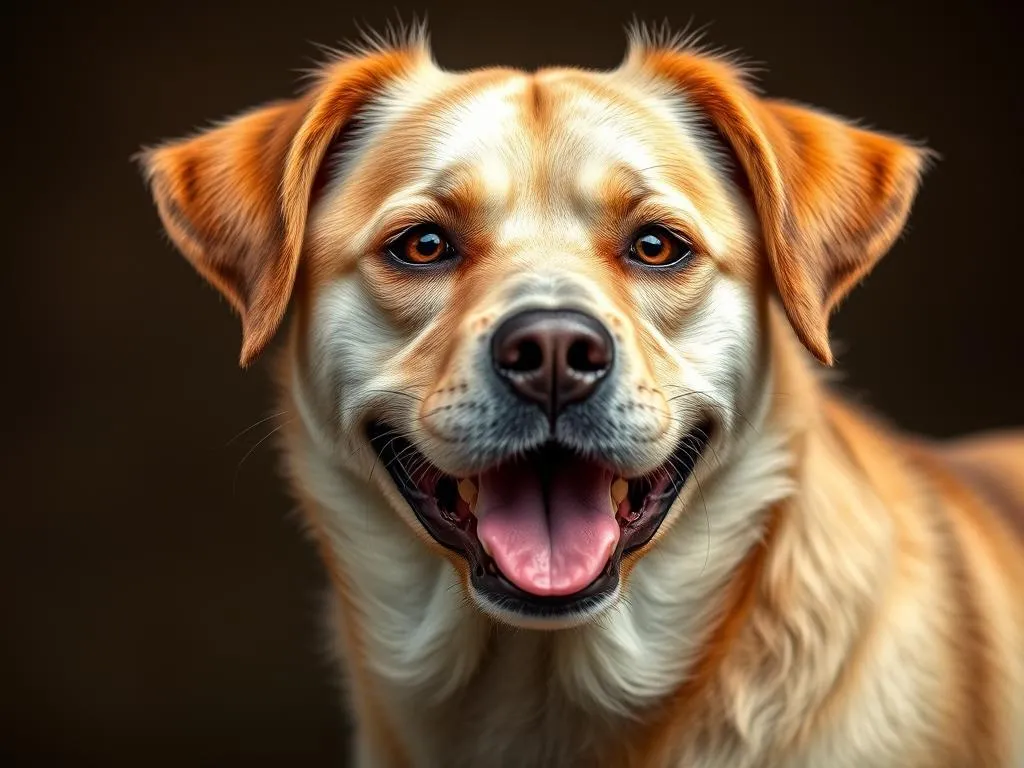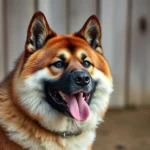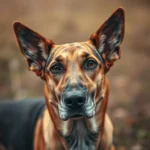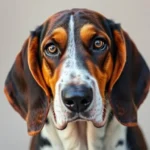
Introduction
Dog breeds represent the diverse tapestry of traits, temperaments, and appearances that canines exhibit. Understanding the differences among various breeds is crucial, especially for prospective dog owners who want to choose a companion that fits their lifestyle. Among the plethora of breeds, some are classified as rare dog breeds, which often find themselves overshadowed by their more popular counterparts. These breeds offer unique characteristics and histories, making them intriguing choices for dog lovers.
So, what exactly constitutes a “rare” dog breed? Generally, these dogs are recognized by breed registries but have a limited number of individuals or face declining populations. In this article, we will delve into the fascinating world of rare dog breeds, exploring their characteristics, historical significance, and considerations for potential owners.
Understanding Dog Breeds
What is a Dog Breed?
A dog breed is a specific group of domestic dogs with particular traits that distinguish them from others. Dog breeds have been selectively bred over centuries for various purposes, including herding, hunting, companionship, and protection. This historical context shapes the physical attributes and temperaments of the breeds we see today.
Popular vs. Rare Dog Breeds
The distinction between popular and rare dog breeds can be attributed to several factors. Popular breeds, like the Labrador Retriever and Golden Retriever, are often chosen for their friendly demeanor, trainability, and adaptability. In contrast, rare dog breeds may not have the same widespread appeal due to factors such as limited availability, specialized care requirements, or specific traits that may not suit every owner’s lifestyle.
Several reasons contribute to the rarity of certain breeds:
– Declining population: Some breeds may have fewer registered individuals due to changing trends in dog ownership.
– Health issues: Breeds that are prone to genetic disorders may have reduced breeding pools.
– Cultural shifts: As lifestyles change, certain breeds may fall out of favor.
Characteristics of Rare Dog Breeds
Physical Attributes
Rare dog breeds can exhibit a wide range of physical traits. They may vary significantly in size, color, and coat type:
- Size: Some rare breeds are small, like the Chien de Frise, while others, such as the Tibetan Mastiff, are quite large.
- Color: Coat colors can vary widely, from the solid hues of the Otterhound to the unique patterns found in the Norwegian Lundehund.
- Coat Type: Coat types can also differ, with breeds like the Lagotto Romagnolo having curly fur, while the Xoloitzcuintli sports a hairless appearance.
Unique features, such as ear shape and tail type, often enhance the distinctiveness of these breeds. For example, the Norwegian Lundehund is known for its extra toes and flexible neck, contributing to its unique agility.
Temperament and Behavior
The temperament of rare dog breeds can differ significantly from more common breeds. Many of these dogs exhibit unique behavioral traits shaped by their historical roles:
- Norwegian Lundehund: This breed is known for its playful and energetic nature, often requiring ample exercise and mental stimulation.
- Otterhound: With a friendly and sociable demeanor, Otterhounds thrive in family environments but may have a stubborn streak.
While some rare breeds may share common traits, such as loyalty and intelligence, their behavior can be influenced by their specific lineage and historical functions.
Health Considerations
When considering a rare dog breed, it’s crucial to be aware of common health issues that may arise:
- Genetic disorders: Certain breeds may be predisposed to specific health conditions, such as hip dysplasia or eye disorders.
- Lifespan expectations: While many rare breeds can live long, healthy lives, some may have shorter lifespans due to genetic predispositions.
As always, prospective owners should conduct thorough research on the health of the breed they are considering.
List of Rare Dog Breeds
Overview of Notable Rare Breeds
Here are some noteworthy rare dog breeds that exemplify the diversity and uniqueness found in the canine world:
- Norwegian Lundehund
- Otterhound
- Xoloitzcuintli (Mexican Hairless Dog)
- Lagotto Romagnolo
- Chien de Frise
- Tibetan Mastiff
- American Bulldog
Detailed Profiles
Norwegian Lundehund
- History: Originating from Norway, this breed was historically used for hunting puffins on steep cliffs. Its unique physical attributes, such as extra toes and a flexible neck, aided in its hunting abilities.
- Physical and Behavioral Traits: Small to medium-sized with a distinct coat and lively personality, the Norwegian Lundehund is known for its agility and playfulness.
- Care Requirements: This breed requires regular exercise and enjoys engaging activities to keep it mentally stimulated.
Otterhound
- History: Developed in England, the Otterhound was bred for hunting otters in rivers. This breed is part of a long history of water dogs.
- Physical and Behavioral Traits: Otterhounds are large, with a rough coat and a distinctive, friendly demeanor. They are known for their excellent swimming abilities.
- Care Requirements: Regular exercise is essential for this breed, which thrives on outdoor activities and requires grooming to maintain its coat.
Xoloitzcuintli (Mexican Hairless Dog)
- History: One of the oldest and rarest dog breeds, the Xoloitzcuintli has been revered in Mexican culture for centuries.
- Physical and Behavioral Traits: Known for its hairless appearance and unique skin texture, this breed is gentle and loyal.
- Care Requirements: Minimal grooming is needed for the hairless variety, but owners must be attentive to skin care and sun exposure.
Lagotto Romagnolo
- History: Originating from Italy, the Lagotto Romagnolo was initially used as a water retriever and is now known for its truffle-hunting abilities.
- Physical and Behavioral Traits: This medium-sized breed has a curly coat and an affectionate personality, making it an excellent family companion.
- Care Requirements: Regular grooming is necessary to maintain its coat, and the Lagotto thrives with regular mental and physical activities.
Chien de Frise
- History: This breed hails from France, where it was originally bred for hunting small game. Its unique appearance and charming personality have made it a favorite among dog enthusiasts.
- Physical and Behavioral Traits: Small and sturdy, the Chien de Frise has a curly coat and a playful, affectionate nature.
- Care Requirements: Regular grooming is essential to prevent matting, and this breed enjoys socialization and playtime.
Tibetan Mastiff
- History: Developed in Tibet, these dogs were historically used to guard livestock and property. Their impressive stature and protective nature make them formidable guardians.
- Physical and Behavioral Traits: Large and powerful, the Tibetan Mastiff has a thick coat and a strong, independent personality.
- Care Requirements: They require ample space and a strong owner who can provide consistent training and socialization.
American Bulldog
- History: Originally bred for bull-baiting and farm work, the American Bulldog has become a beloved family pet due to its loyalty and protective nature.
- Physical and Behavioral Traits: Medium to large-sized, with a muscular build and friendly demeanor, this breed is known for its affectionate behavior towards family.
- Care Requirements: Regular exercise and training are essential to ensure a well-rounded temperament.
Rarity Status and Conservation
The rarity of these breeds often stems from various factors, including declining populations, changes in ownership trends, and health concerns. Conservation efforts are vital to maintain these breeds’ existence. Organizations and breed clubs work tirelessly to promote responsible breeding practices and educate potential owners about the importance of preserving genetic diversity.
Considerations for Owning a Rare Dog Breed
Availability and Sourcing
Finding a rare dog breed can be challenging, as they may not be widely available through traditional breeders. Prospective owners should seek reputable breeders who prioritize health and temperament. Adoption from rescue organizations dedicated to rare breeds is also a viable option.
Training and Socialization
Many rare dog breeds require specific training and socialization techniques to thrive. Early socialization is crucial to help them become well-adjusted adults. Training should focus on positive reinforcement methods, as many of these breeds can be sensitive to harsh training techniques.
Lifestyle and Commitment
Owning a rare dog breed often demands significant time, space, and activity. Prospective owners should assess their lifestyle to ensure they can meet the needs of these unique dogs. Financial considerations, such as veterinary care, grooming, and food, should also be factored into the decision-making process.
The Importance of Rare Dog Breeds in Society
Cultural Significance
Many rare dog breeds possess deep-rooted historical and cultural significance. Breeds like the Xoloitzcuintli are revered in their native cultures, symbolizing companionship and loyalty.
Role in Biodiversity
Preserving rare dog breeds is essential for maintaining genetic diversity within the canine population. Each breed contributes to the overall health and resilience of dog genetics, ensuring that future generations of dogs can thrive.
Community and Support
There are various organizations and communities dedicated to supporting owners of rare dog breeds. These groups often provide resources, training tips, and networking opportunities for enthusiasts and owners alike.
Conclusion
Exploring the world of rare dog breeds opens a window to unique companions that can enrich our lives in special ways. From their distinctive characteristics to their rich histories, these breeds offer a wealth of knowledge and joy for dog lovers. While considering the adoption of a rare breed, it is essential to approach the decision with responsibility and care, ensuring that both the dog and owner can thrive together.
Owning a rare dog breed can be a rewarding journey, filled with companionship, learning, and love. As we embrace the diversity within the canine world, we can celebrate the unique qualities that each breed brings to our lives.









